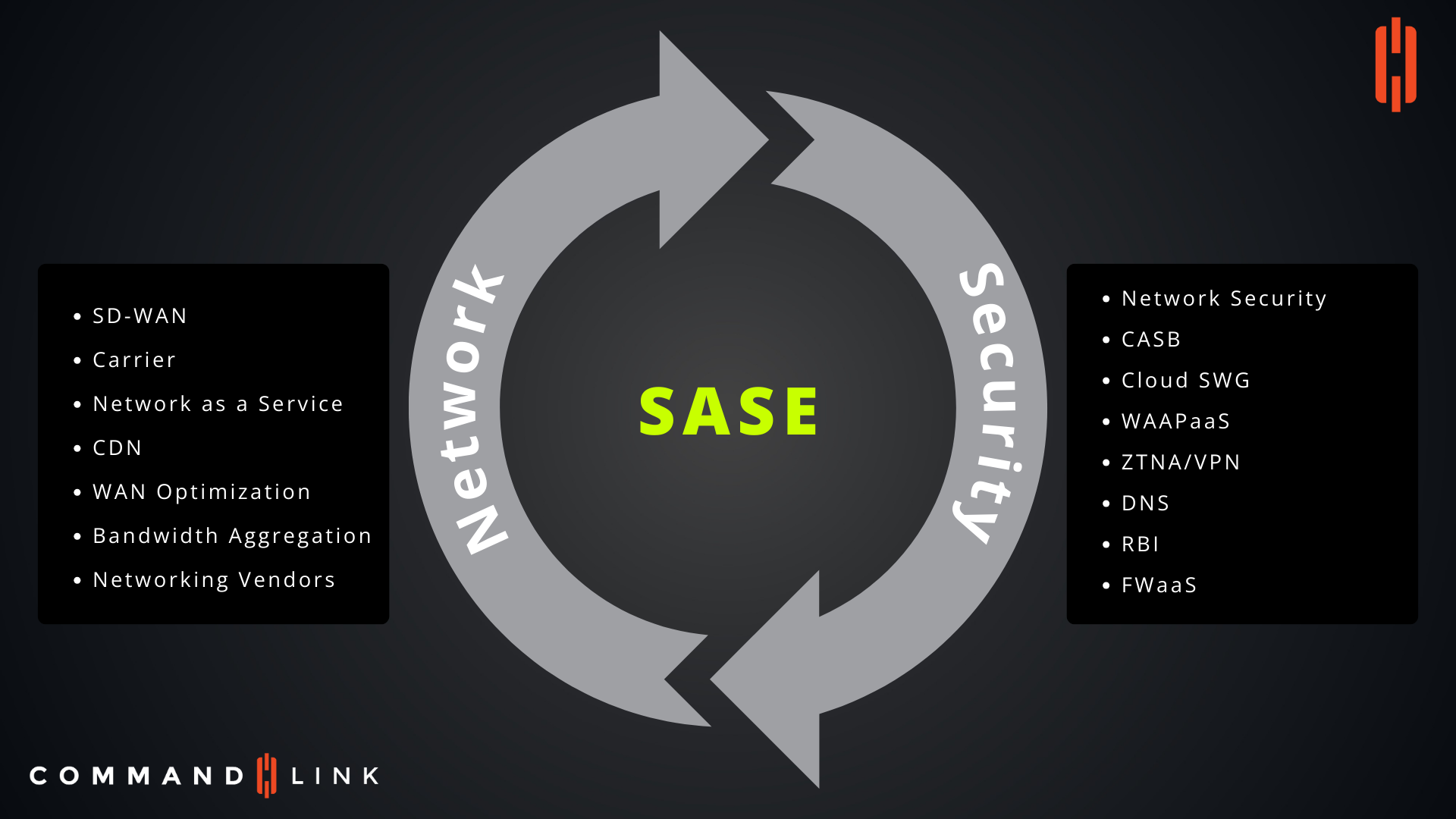Platform
Platform
Everything you need to run a secure global network—in a single system.
Solutions
Solutions
Learn how our solutions were designed to help you scale your IT resources
Company
CommandLink
Let's talk about how we can help you!
Partners

How Does SASE Integrate Network and Security Functions into a Unified Framework?
What is the Role of SASE in Modern Networking and Security?
The convergence of networking and security functions into a single, cohesive framework is critical in today’s complex IT landscape. Secure Access Service Edge (SASE) represents this convergence, combining a variety of networking and security services into a unified, cloud-native platform that enhances both performance and protection across an organization’s infrastructure.
How Does SASE Unify Networking Services?
SASE simplifies network management by integrating various networking services into a single platform. This includes SD-WAN, Carrier services, Network as a Service (NaaS), Content Delivery Network (CDN) services, WAN Optimization, Bandwidth Aggregation, and Networking Vendor management. By centralizing these services, SASE reduces the complexity typically associated with managing multiple vendors and disparate networking tools, providing a streamlined and efficient approach to network management.
What Security Functions Are Integrated within SASE?
On the security side, SASE incorporates a comprehensive suite of security services, including Network Security, Cloud Access Security Broker (CASB) functions, Cloud Secure Web Gateway (SWG), Web Application and API Protection as a Service (WAAPaaS), Zero Trust Network Access (ZTNA)/VPN, Domain Name System (DNS) security, Remote Browser Isolation (RBI), and Firewall as a Service (FWaaS). These services are designed to work together seamlessly, providing end-to-end protection from the data center to the remote user.
How Does SASE Enhance Performance and Security Simultaneously?
By integrating networking and security services, SASE provides a balanced approach that does not compromise performance for security, or vice versa. The unified platform ensures that security policies are enforced consistently across all networking environments, whether they are on-premises, in the cloud, or at the edge. This consistency enhances security while also improving the performance and reliability of the network, as SASE optimizes traffic routing and reduces latency.
Why is SASE the Future of IT Infrastructure?
The future of IT infrastructure lies in the ability to manage and secure increasingly complex and distributed environments efficiently. SASE addresses these challenges by providing a flexible, scalable, and integrated platform that can adapt to the evolving needs of modern businesses. As organizations continue to adopt cloud-based services and support a distributed workforce, SASE will play a pivotal role in ensuring that both network performance and security remain robust and effective.